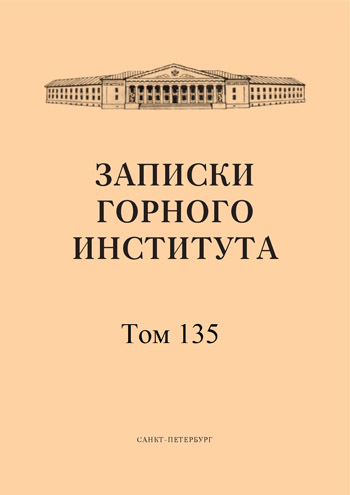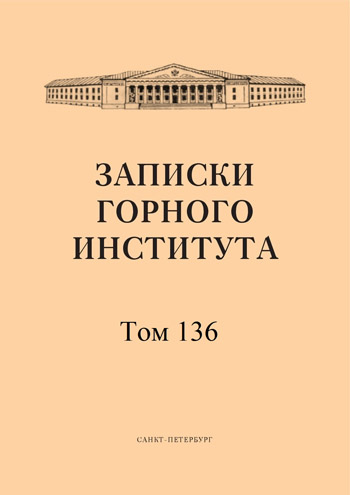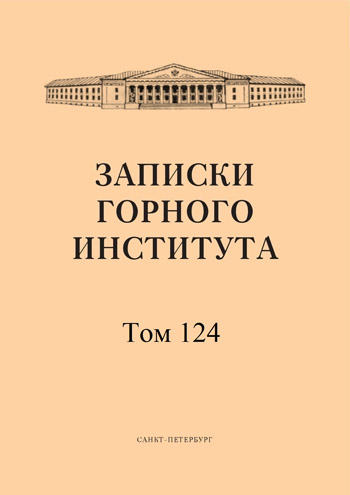-
Date submitted1991-12-05
-
Date accepted1992-02-15
-
Date published1992-12-30
Igor V. Litvinenko (1923-1985)
- Authors:
- Yu. N. Kapkov
Igor Vasilyevich Litvinenko belonged to the generation that had a difficult and worthy fate to bear on their shoulders the hunger and Stalinist repression of the 190-1940s, to overcome all the bloody hardships of the Great Patriotic War and to win the victory, paying for it an incredibly bitter price. The generation, whose labor wa3s restored the country.
-
Date submitted1991-12-30
-
Date accepted1992-03-01
-
Date published1992-12-30
Seismic studies of the Kola ultra-deep well - a way to study the nature of deep seismic boundaries
In 1958, I.V.Litvinenko laid the foundation for seismic studies of the consolidated earth crust on the Baltic Shield: for the first time, depth seismic soundings were performed in Karelia.
-
Date submitted1991-12-14
-
Date accepted1992-02-12
-
Date published1992-12-30
Results of deep seismic studies in the area of the junction of the southeastern margin of the Baltic Shield and the Russian Plate
- Authors:
- N. I. Suvorova
- O. N. Makusheva
Since 1958, on the territory of the eastern part of the Baltic Shield, on the initiative and under the direction of I.V. Litvinenko, a large volume of seismic studies by the DSS method has been carried out.
-
Date submitted1991-12-08
-
Date accepted1992-02-29
-
Date published1992-12-30
Peculiarities of the deep crustal structure along the Nickel - Umbozero - Brooks profile
Studying the structure of the crust and upper montia of different tectonic zones of the Baltic Shield and obtaining type models for different-age provinces of the oldest consolidated crust - this is the main direction of seismic research conducted in the region in the last decade and carried out within the framework of domestic and international projects
-
Date submitted1991-12-01
-
Date accepted1992-02-21
-
Date published1992-12-30
Upper mantle of the Baltic Shield
- Authors:
- N. V. Sharov
The study of the deep structure of the Baltic Shield is of great importance for the problem of the evolution of the Earth's crust of the continents and especially for Europe.
-
Date submitted1991-12-08
-
Date accepted1992-02-15
-
Date published1992-12-30
Seismological studies of EEWM on the Baltic Shield and its southern slopes
- Authors:
- N. K. Bulin
- E. V. Isanina
- V. I. Litvinenko
Seismological studies using the earthquake exchange wave method (EEWM) with registration and interpretation not only of earthquakes but also of explosions at different epicentral distances have been carried out on the Baltic Shield since the early 1960s.
-
Date submitted1991-12-09
-
Date accepted1992-02-12
-
Date published1992-12-30
Depth structure of the north of the East European Platform as a basis for predicting kimberlite magmatism
- Authors:
- N. G. Toporkova
The territory of the European North of Russia is of undoubted interest for its geological development, as it is one of the economically developed areas of the country, the productivity of which for many types of raw materials (oil, coal, diamonds and others) is proved by long-term practice of geological work.
-
Date submitted1991-12-19
-
Date accepted1992-02-15
-
Date published1992-12-30
Comparative analysis of the depth structure of the Baltic and Ukrainian Shields based on GSZ data
Ancient Precambrian shields are the largest geostructural elements of our planet, in the depths of which numerous mineral deposits are widely developed. Within the shields, Precambrian crystalline rocks are exposed on the day surface and are therefore most accessible for various kinds of geologic and geophysical studies.
-
Date submitted1991-12-09
-
Date accepted1992-02-10
-
Date published1992-12-30
Methods and results of detailed seismic studies of the Earth's crust in the Baikal rift zone
- Authors:
- S. V. Krylov
- Z. R. Mishenkina
- V. S. Seleznev
I.V.Litvinenko was one of the first researchers who in the process of research of the Baltic Shield, including the area of the Kola ultra-deep well, made a consistent transition from traditional low-detail work on long-length GZS profiles to highly detailed study of the Earth's crust with a corresponding transformation of the methodology of deep seismic studies.
-
Date submitted1991-12-18
-
Date accepted1992-02-03
-
Date published1992-12-30
Features of seismic stratification of the Earth's crust of the Ukrainian Shield
Seismic wave fields recorded during regional geophysical surveys by the method of deep seismic sounding (DSS) on the Ukrainian Shield are the main source of information on the lithosphere structure of this large structure of the East European platform.
-
Date submitted1991-12-02
-
Date accepted1992-02-14
-
Date published1992-12-30
Seismic studies of the lithosphere through the Krivoy Rog and Dnieper-Donets ultra-deep wells
- Authors:
- O. M. Kharitonov
- V. D. Omelchenko
- N. E. Grin
Ultra-deep drilling opens a new stage in the knowledge of the structure of the Earth's interior, as evidenced by studies of the Kola GGS-3 on the Baltic Shield.
-
Date submitted1991-12-14
-
Date accepted1992-02-02
-
Date published1992-12-30
Main scientific works by I.V. Litvinenko
- Authors:
- Editorial board
I.V. Litvinenko's published and stock scientific works are listed in chronological order.


